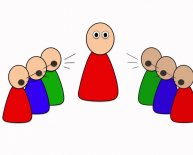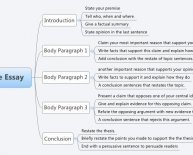
How to write college papers?

I. Formal Evaluation:
A formal evaluation could be the fundamental type of writing about art and frequently the very first taught in every introductory art history course. In a strict formal analysis, hardly any other information is needed apart from that which you can see, and even though some understanding of the topic matter helps, your focus should be regarding the artistic components of a work. A formal evaluation is targeted on aspects like range, color, composition, and style, and defines the consequence of these creative decisions in the audience. While any formal analysis must use a good deal of description, it is important to understand that even a pure formal analysis should always be thesis-driven and every point should tie returning to the entire interpretation associated with work.
Exemplory case of a brief formal evaluation:
In Raphael’s Marriage of the Virgin, the artist makes use of one-point perspective, balanced structure, and radiant major colors to convey a feeling of security and order, hence representing the Christian narrative in idealized, good aesthetics for the Renaissance. Into the foreground, a guy and ladies stand on either side of a central figure, their particular adjoining fingers generating a focal point that expands back once again to the entrance on the horizon range. The orthogonal outlines produced by the tiled pavement move the viewer’s attention along the same main road and stress the perfect viewpoint of this scene. The deep hues of yellow and green into the central man’s clothing complement the red and blue when you look at the woman’s, and develop the palette for the rest of the onlookers, an easy, pure mix of colors that plays a part in the sense of order. The practically perfect symmetry regarding the scene, along with the fairly empty center ground, underscore both religious motif and also the visual values of that time.
The practically perfect symmetry regarding the scene, along with the fairly empty center ground, underscore both religious motif and also the visual values of that time.
Note the way the copywriter balances description regarding the work, making use of a vocabulary predicated on familiarity with creative practices and artistic elements, with analysis of the effect on the audience. The thesis (in strong) provides a framework throughout the part and acts as the driving force behind the descriptive findings.
The instance above simply demonstrates the kind of composing typically employed in an official evaluation and is for that reason smaller much less thorough than most artistic analyses. Also note that whilst journalist acknowledges the main topic of the piece (the Christian account of the relationship regarding the Virgin Mary) and its particular time frame (the Renaissance), almost all of the focus is continued the artistic elements on their own. If copywriter had been to include extra information beyond the observable facets of the scene, this will be a little more of a research report.
















